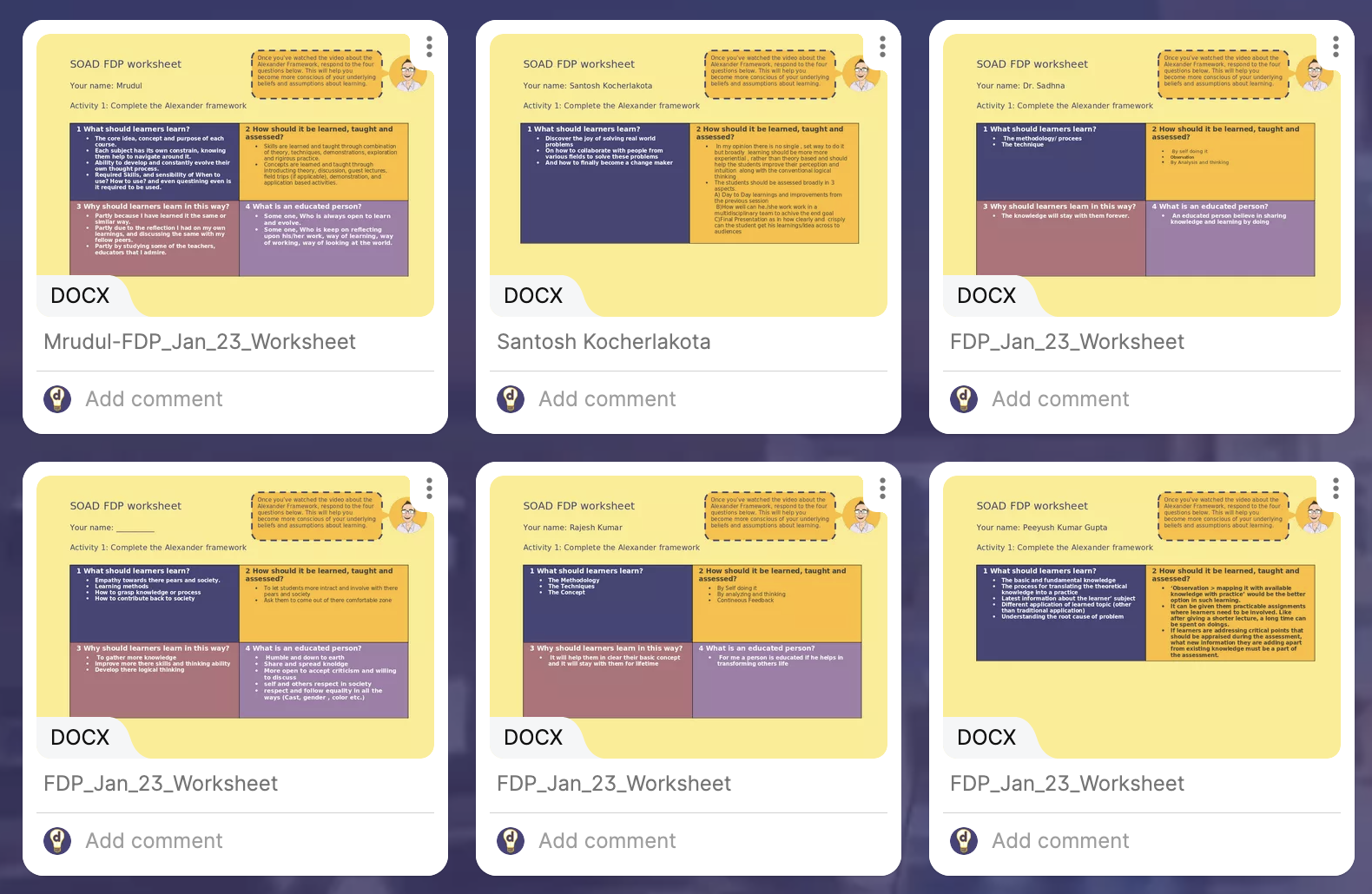School of Art & Design FDP
Online FDP, January 2022
Preparing Students For Success

How did the FDP work?
The FDP was a fully online learning experience. A week before the live session, participants were provided with a short video introduction by the facilitator (see video).
The video provided the participants with an overview of the FDP, and explained what they would be required to do. A flipped learning approach was used, which required participants to complete two activities in the days leading up to the Friday live session.
This meant that the live session could be more interactive and involve a discussion of what they had learned by completing the activities.
Activity 1
For their first activity, the participants were asked to download and complete a worksheet (see video).
Participants were asked to respond to four questions: what should learners learn? How should it be learned, taught and assessed? Why should learners learn in this way? And what is an educated person?
The aim of the activity was to help them reflect on their values about learning and teaching.
A story about empathy
We then provided participants with a short story abut the power of empathy in learning design. Empathy is a powerful tool that we can use to help us identify obstacles to students’ success, and is a core tool in for teachers, faculty and learning designer.
In this video, Phil from Ding Learning shares a short story to illustrate the power of empathy in teaching and learning. Phil explains how we can use empathy to anticipate how our students might be feeling in a learning situation. This enables us to focus more clearly on removing potential barriers to learning for individual students.
Activity 2
For their second activity, participants were given four fictional student profiles. Each student had specific learning needs: one was dyslexic, one had low hearing, one was on the autistic spectrum and one had Attention Deficit Hyperactivity Disorder (ADHD).
The aim of this activity was to help participants anticipate the barriers that could prevent students from learning. Sometimes we will be able to see these barriers, but other times we won’t. But by viewing each student as an individual with specific needs, we are more able to design inclusive learning experiences that benefit all students.
Watch the video to see what participants were asked to do.
Upload your worksheet
Once participants had completed their worksheet, they. were asked to upload it to a Padlet. Padlet is a great tool for displaying work and making it visible to other learners.
Each participant could read the work of other participants, which provided an opportunity for peer learning before the live session. It also enabled the facilitator to develop an understanding of participants’ views about learning and use these as the basis for discussion activities during the session.
Join the live session!
The FDP live session took place at the end of the week on the Friday. During the live session, the facilitator created discussion activities to enable participants to reflect on the work they had produced, and to plan how they might evolve their approach to teaching and learning design.


